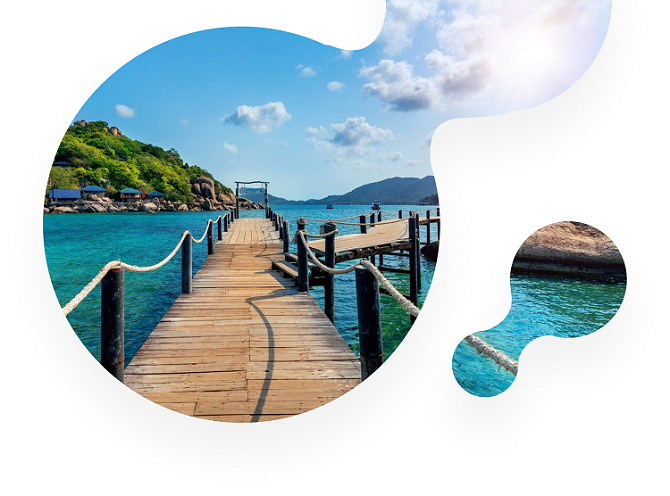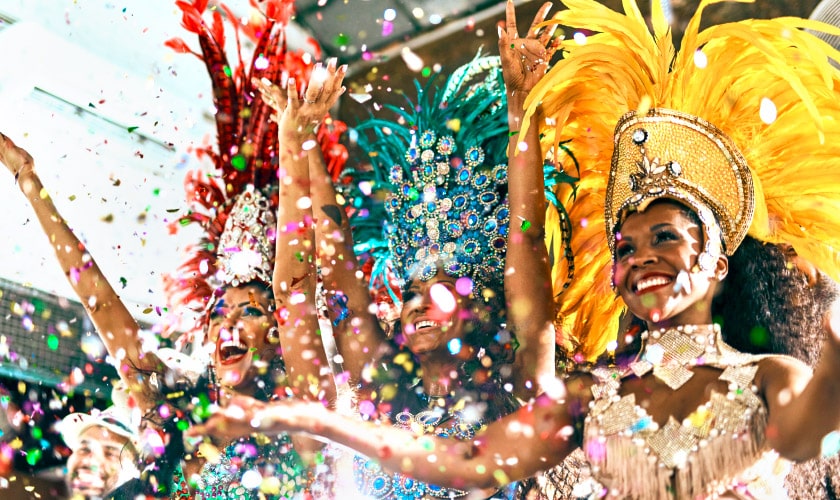When is the carnival in Veracruz in 2023?
Carnival dates always vary because the date of Easter is based on the lunar calendar. But in 2022, the carnival in Veracruz was moved to summer because of COVID. And it was decided by the committee that the carnival festivities would continue to be held in the summer.
The dates for the carnival in Veracruz in 2023are from Thursday, June 29 to Wednesday, July 5.
Where is the carnival in Veracruz?
Many official carnival events take place in SoCalo. They include live entertainment, the opening and closing of the carnival, and a market of Indians who sell handmade items on blankets laid out on the sidewalks.
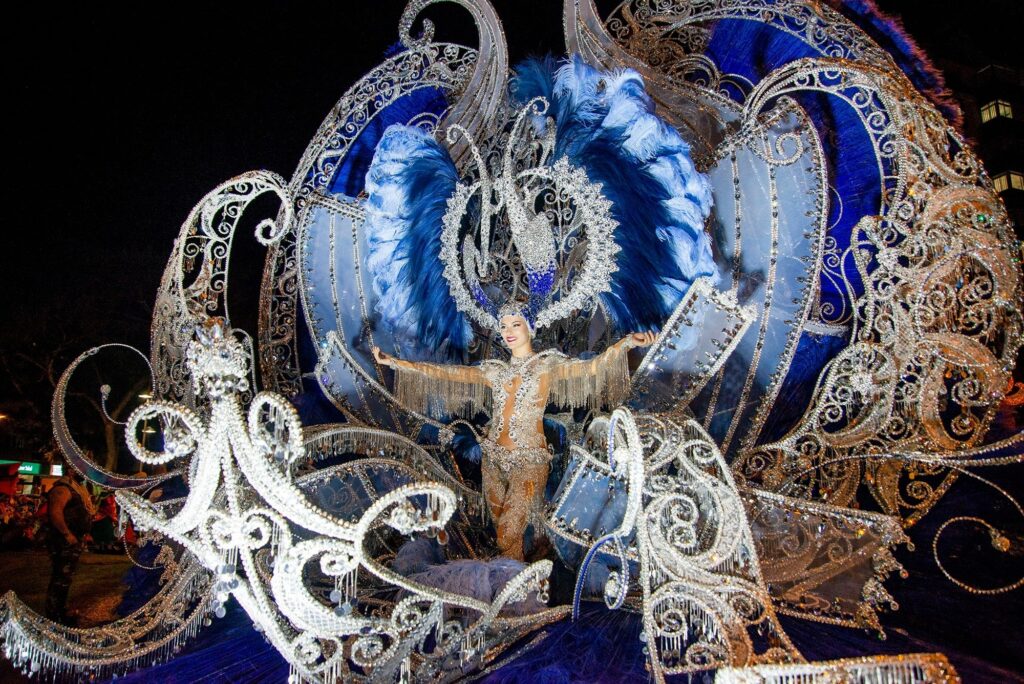
Socalo is the center of the city of Veracruz. All the bars, clubs, and restaurants in the area are filled with people throughout the carnival, partying until dawn. During the carnival, a large stage is set up in Socalo with free entertainment, music concerts, dance troupes, jarocho shows, and performances. Numerous street performers and musicians put on impromptu shows along the perimeter of Socalo and the official entertainment venues.
Socalo is also the site of the two events that open and close the Carnival of Veracruz, the burning of the Bad Mood and the funeral of Juan Carnival. There are plenty of street vendors selling everything from food and drink to traditional craft items.
How is carnival celebrated in Veracruz?
The Veracruz Carnival is a free and colorful celebration filled with amazing parties, parades, and live music. It is a celebration that brings together all residents and guests, regardless of their nationality or social status, and allows them to enjoy life, eat and drink to their heart’s content, and party until dawn!
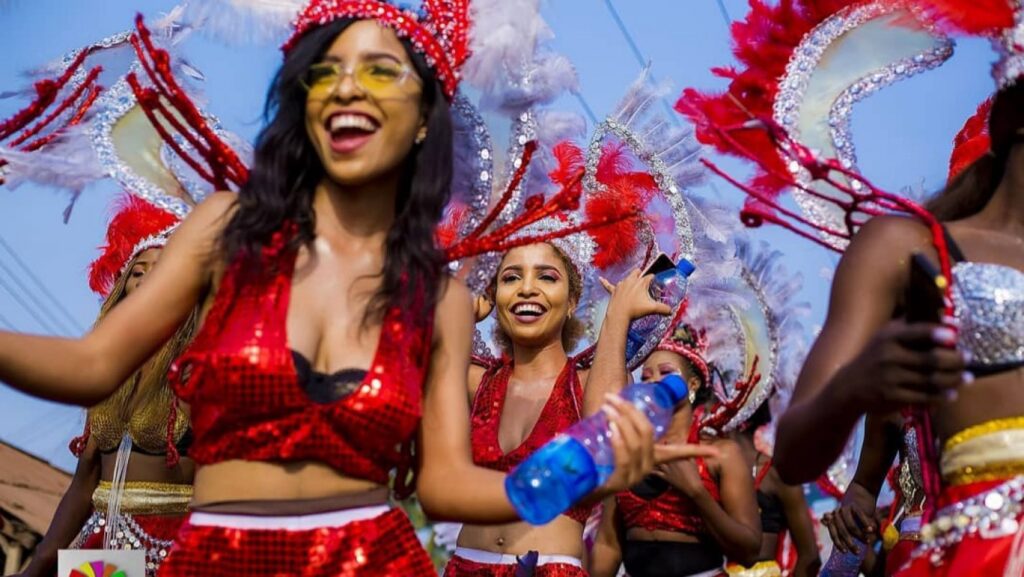
History of the holiday:
- The roots of the Carnival of Veracruz go back to colonial times, and it was first held in 1866, when Emperor Maximilian ruled the country. Carnival was seen as a last chance to party before the abstinence of Lent.
- The celebrations at that time were held according to European traditions and were mostly masquerade balls and private parties. Later, however, ordinary townspeople were allowed to gather for street festivities. Residents living in neighborhoods outside the city wall created new forms of dance and music that were borrowed from African, European, and local cultural traditions. And in the late 18th century, participants in the harbor carnival began donning colorful costumes and dancing to African rhythms.
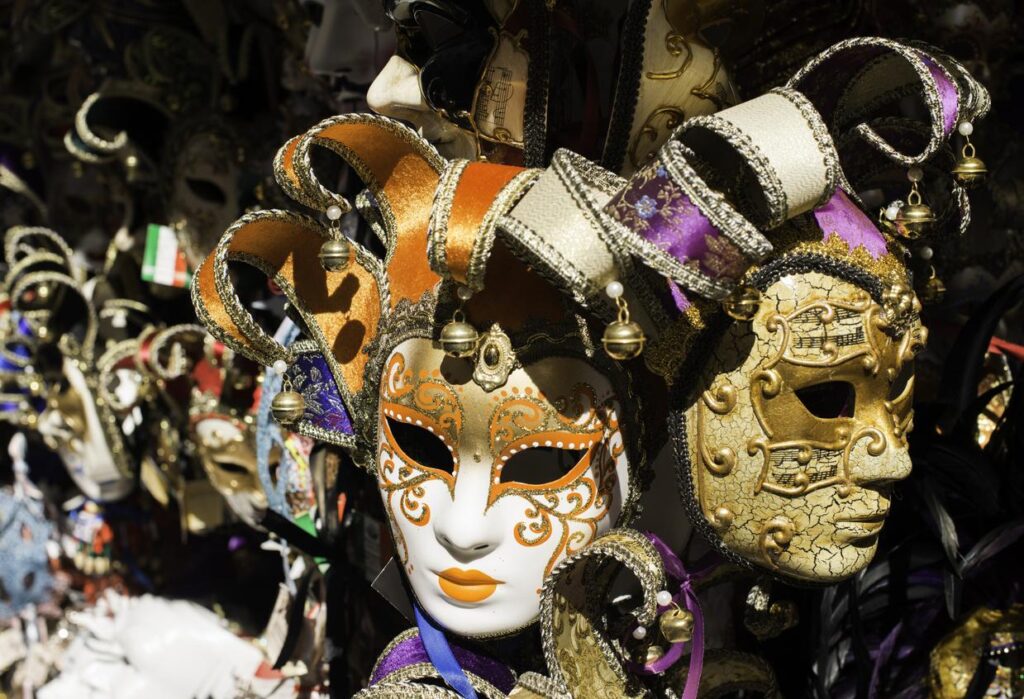
- When French Emperor Napoleon III sent his army to Mexico in 1861, the carnival expanded to include several public parades and dance parties. But the war between the Republican and French armies took a new turn in late 1866, many strict rules were imposed on the carnival and the celebrations were limited to three days.
- A post-revolutionary coalition in 1925 began to present the carnival as the revolutionary ideal of «Mexico for Mexicans» and to work to restore the event to the city. The organizers hoped that the carnival would provide Veracruz with an opportunity for celebration after years of social struggle and bring people of different classes and ethnic groups together!
Celebration plan
Before Carnival: Carnival Prelude.
- Day 1 – Burning Bad Moods.
- Day 2 – Coronation of Children.
- Day 2 – Coronation of the King of Joy.
- Day 3 – 6 – Carnival Parades.
- Day 7 – Funeral of Juan Carnival.
Burning the Bad Mood:
The first event of the carnival is the Burning of Bad Mood (Quema del Mal Humor) ceremony, which takes place in Socalo. It is usually an effigy of a famous person (Mexican or foreign): a politician, a celebrity or a criminal, or it can represent an abstract negative idea, such as war or mortal sin, which is burned so that people symbolically leave behind their everyday worries and sorrows and the fun begins.
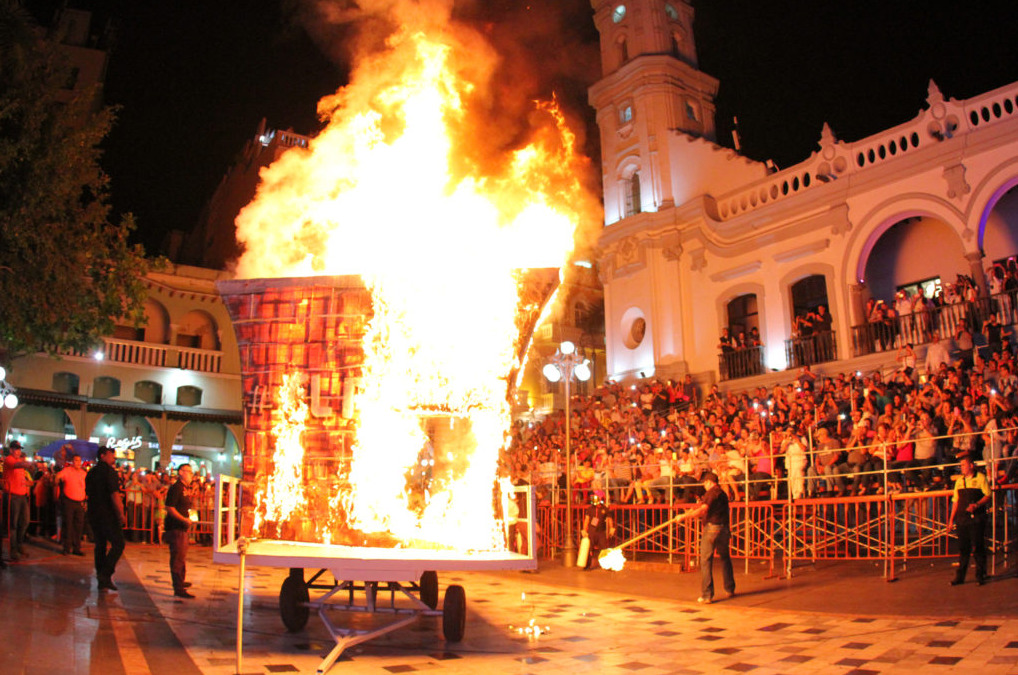
Coronation of the Carnival King and Queen:
The long-awaited event of the carnival is the coronation of the Carnival Queen and King, who will preside over all the festivities. The Carnival Queen usually represents local beauty, while the King is the crude incarnation of the Roman deity of mockery and malevolence, Momo. Together they are responsible for conveying happiness to their subjects. And after the coronation, one of the biggest dance parties ever held in Mexico begins!
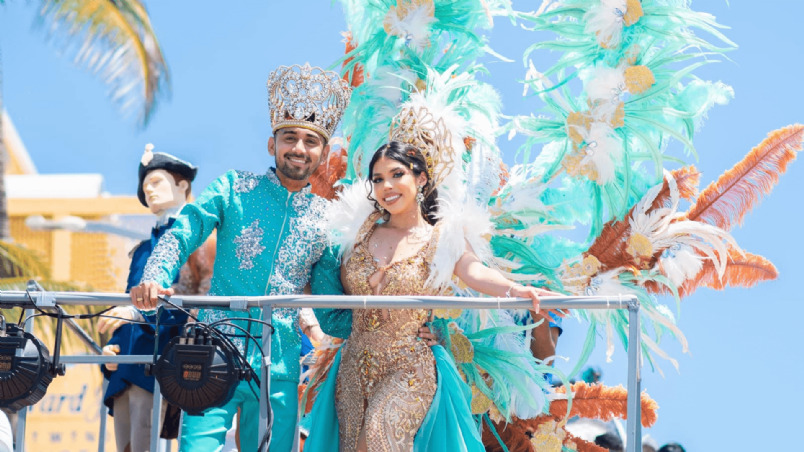
Carnival parades:
Each parade features no fewer than 50 platforms, marching bands, dance troupes, folklore groups, musicians, percussionists, and many others. Extravagant events take place throughout the city and feature elaborate costumes, masks, and colorful platforms. The parades are attended by thousands of spectators who cheer on the performers throughout the parade route, creating a noisy but fun atmosphere in the city. Citizens come out in droves to see the parade and wear creative and fun carnival costumes.
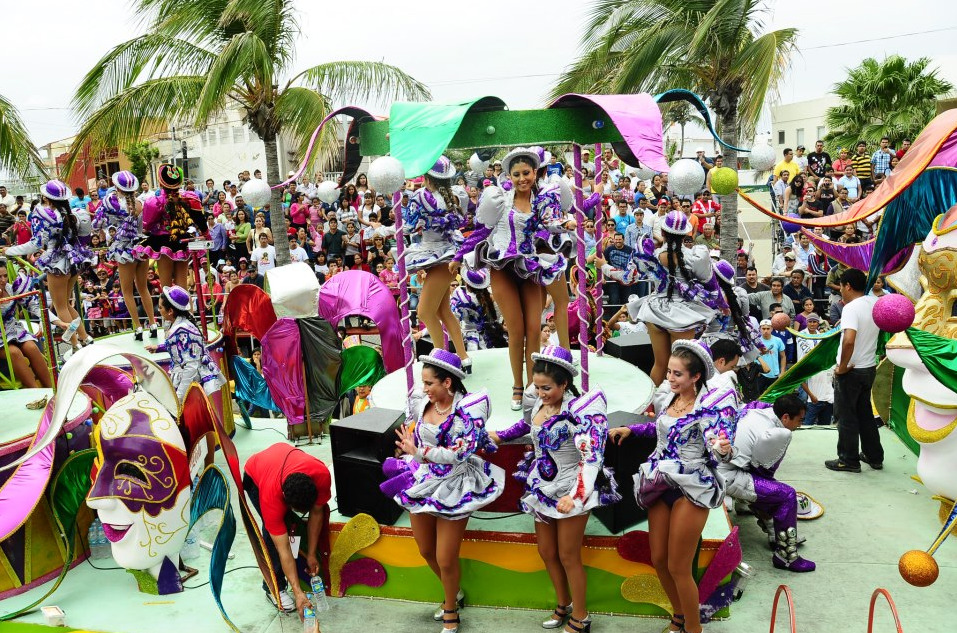
For the most part, the parades don’t vary too much. They all feature beautiful, barely clothed women dancing to Latin American music on extremely impressive platforms. And it’s not unusual to see costumed transvestites parading alongside women in sparkling dresses. The platforms, known as «carros alegóricos» or «allegorical cars», are decorated in true Mexican style. They are bright, colorful, and decorated with many decorations.
It is highly recommended that you see at least one of the four incredible night parades! There is such an electric energy that is created by the interaction between the crowd and the performers. On Sunday carnival night, the most lavish and large-scale carnival parades take place. Parades on other nights tend to be more modest versions of a weekend parade.
The sounds of harps, marimbas, guitars, and jaranas can be heard throughout the city, where salsa and samba are played and danced. Traditional comparsas, batoneras, batucadas (groups of drummers) and dance groups meet in the town square and in other parts of the city, putting on amazing performances whose only purpose is to bring people joy. But what you definitely shouldn’t miss is the dance party held at the socalo. This is the time when couples get together and dance the danzon.
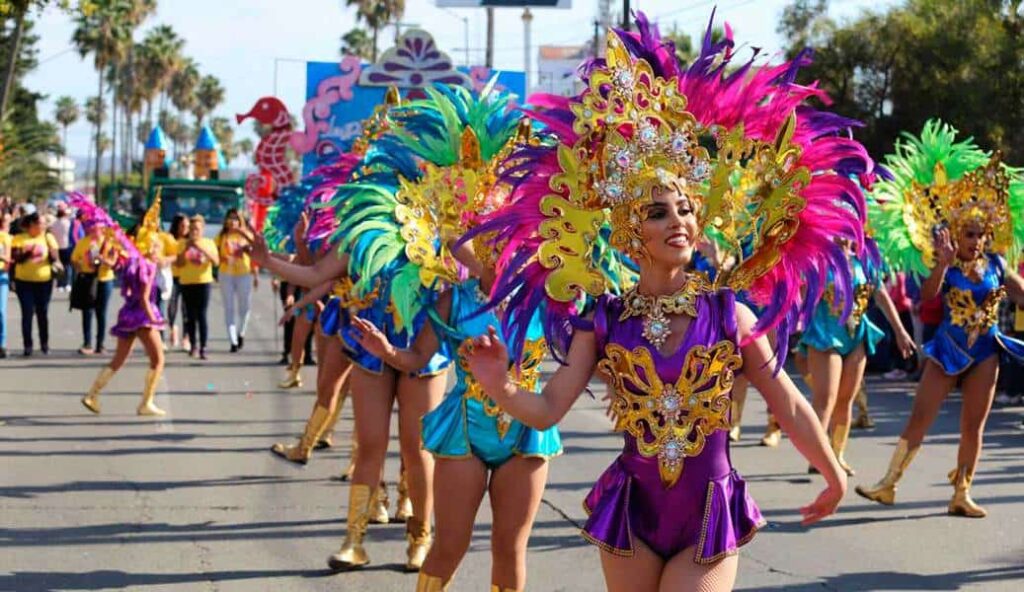
Dunson:
- Salsa, cumbia, reggae and marimba are extremely popular music genres you’ll hear at Carnaval Veracruz. But most of all, the city’s residents love danson, a synonym for Carnival Veracruz.
- Dunson is a romantic dance that originated in European ballrooms and changed slightly when it reached Haiti and Cuba in the 1880s, where it became a Creole dance. It is a sophisticated and sensual dance. And every step the dancers take creates a pattern on the floor to the rhythm of the orchestral music.
- Women wear beautiful dresses with ruffles and lace, as well as high-heeled shoes, colored ribbons, necklaces, and holding fans. Men choose equally impeccable outfits with guaiabers and dainty hats. Together, men and women become pairs and dance this elegant and romantic dance, which represents the local culture.
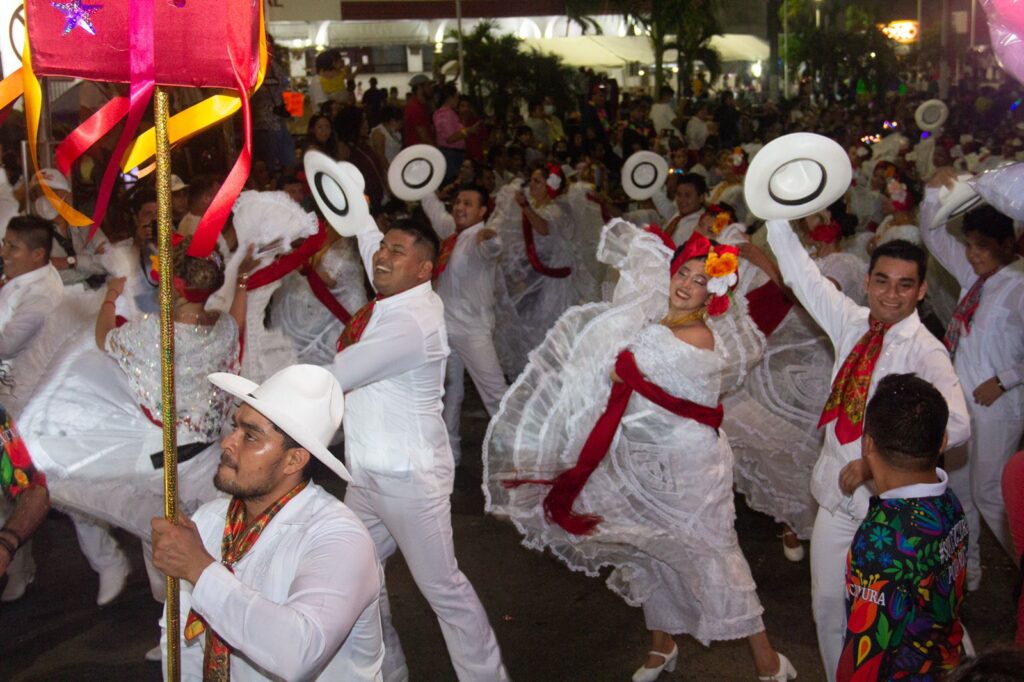
Funeral for Juan Carnival:
Carnival ends with the funeral of the holiday spirit Juan Carnival, which marks the end of the many grueling days of festivities. It is a parodic funeral for the symbol of carnival, who is accompanied by his royal court. Everyone pretends to mourn him by wearing mourning robes. This procession of mourners bids farewell to the carnival and concludes this year’s festivities.
During Juan Carnaval’s funeral, which takes place in Socalo, a testament is read that is filled with ironic and sarcastic jokes about political and social affairs in Veracruz and throughout Mexico.

Order of celebration of the carnival in Veracruz in 2023:
- June 29, 2023 – Burning the Bad Mood in SoCalo.
- June 30, 2023 – Children’s Coronation and Coronation of the Royal
Court at the Macroplaza del Malecon. - July 1-4, 2023 – Traditional Paseo (parades on Manuel Avila Camacho Boulevard) and Marine Parade.
- June 5, 2023 – Funeral of Juan Carnival.
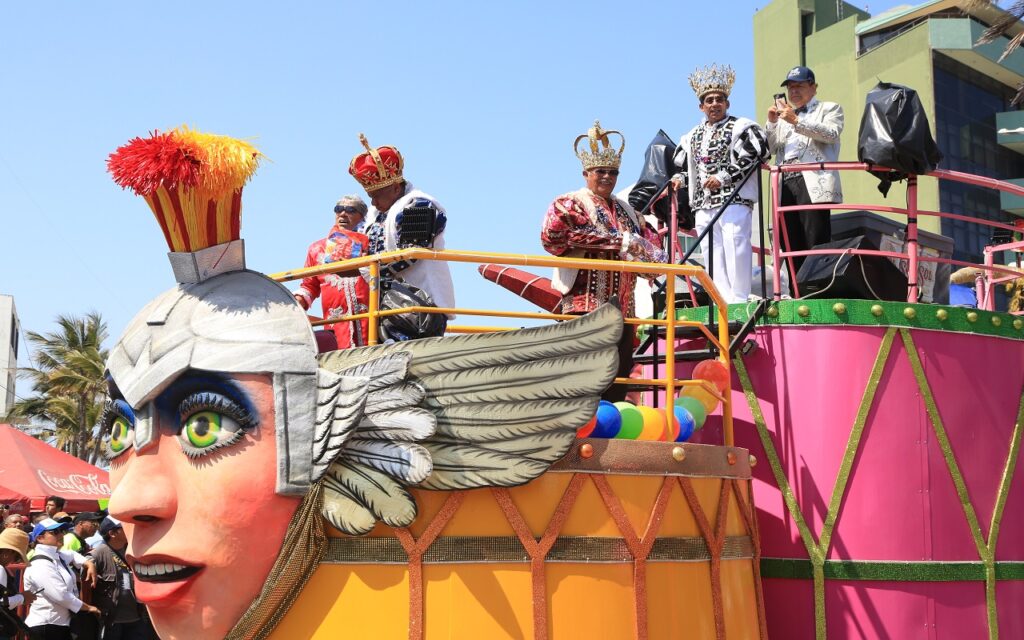
Useful information:
How to get to Veracruz?
- By plane: Veracruz has a small international airport, General Eriberto Jara International Airport. Flights are available from many Mexican cities, including Mexico City, and there are direct flights from Houston and Texas.
- By bus: The ADO bus station is just a short walk from the city center, and the bus ride from Mexico City to Veracruz takes about 5.5 hours. The bus trip from Puebla takes 3-4 hours.
- By car: Veracruz is about 5.5 hours from Mexico City.
What is the weather like during Carnival in Veracruz?


